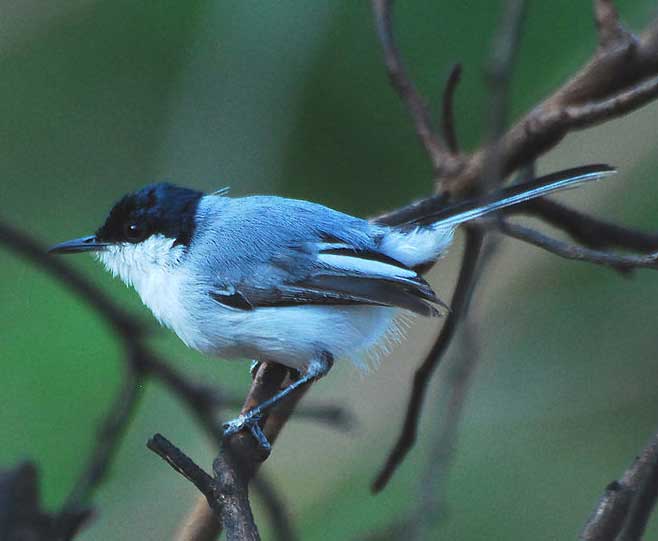
Polioptila albiloris (*)
Superregnum: Eukaryota
Cladus: Unikonta
Cladus: Opisthokonta
Cladus: Holozoa
Regnum: Animalia
Subregnum: Eumetazoa
Cladus: Bilateria
Cladus: Nephrozoa
Superphylum: Deuterostomia
Phylum: Chordata
Subphylum: Vertebrata
Infraphylum: Gnathostomata
Megaclassis: Osteichthyes
Cladus: Sarcopterygii
Cladus: Rhipidistia
Cladus: Tetrapodomorpha
Cladus: Eotetrapodiformes
Cladus: Elpistostegalia
Superclassis: Tetrapoda
Cladus: Reptiliomorpha
Cladus: Amniota
Classis: Reptilia
Cladus: Eureptilia
Cladus: Romeriida
Subclassis: Diapsida
Cladus: Sauria
Infraclassis: Archosauromorpha
Cladus: Crurotarsi
Divisio: Archosauria
Cladus: Avemetatarsalia
Cladus: Ornithodira
Subtaxon: Dinosauromorpha
Cladus: Dinosauriformes
Cladus: Dracohors
Cladus: Dinosauria
Ordo: Saurischia
Cladus: Eusaurischia
Subordo: Theropoda
Cladus: Neotheropoda
Cladus: Averostra
Cladus: Tetanurae
Cladus: Avetheropoda
Cladus: Coelurosauria
Cladus: Tyrannoraptora
Cladus: Maniraptoromorpha
Cladus: Maniraptoriformes
Cladus: Maniraptora
Cladus: Pennaraptora
Cladus: Paraves
Cladus: Eumaniraptora
Cladus: Avialae
Infraclassis: Aves
Cladus: Euavialae
Cladus: Avebrevicauda
Cladus: Pygostylia
Cladus: Ornithothoraces
Cladus: Ornithuromorpha
Cladus: Carinatae
Parvclassis: Neornithes
Cohors: Neognathae
Cladus: Neoaves
Cladus: Telluraves
Cladus: Australaves
Ordo: Passeriformes
Subordo: Passeri
Infraordo: Passerida
Superfamilia: Certhioidea
Familia: Polioptilidae
Genus: Polioptila
Species: Polioptila albiloris
Subspecies: P. a. albiloris – P. a. vanrossemi
Name
Polioptila albiloris P.L. Sclater & Salvin, 1860
Type locality: Motagua Valley, Zacapa, Guatemala.
References
Primary references
Sclater, P.L. & Salvin, O. 1860. Characters of eleven new species of birds discovered by Mr. Osbert Salvin in Guatemala. Proceedings of the Zoological Society of London 28(1): 298–301. Reference page. p. 298
Additional references
Smith, B.T., Bryson, R.W.Jr., Mauck III, W.M., Chaves, J., Robbins, M.B., Aleixo, A. & Klicka, J. 2018. Species delimitation and biogeography of the gnatcatchers and gnatwrens (Aves: Polioptilidae). Molecular Phylogenetics and Evolution 126:45-57. DOI: 10.1016/j.ympev.2018.03.012Reference page.
Vernacular names
English: White-lored Gnatcatcher
español: Perlita cejiblanca
The white-lored gnatcatcher (Polioptila albiloris) is a species of bird in the family Polioptilidae. It is found in Costa Rica, El Salvador, Guatemala, Honduras, Mexico, and Nicaragua.[2]
Taxonomy and systematics
The white-lored gnatcatcher was previously considered conspecific with the black-capped gnatcatcher (Polioptila nigriceps). The Yucatan gnatcatcher (P. albiventris) was previously a treated as a subspecies of the white-lored.[3] The white-lored gnatcatcher has two subspecies, the nominate Polioptila albiloris albiloris and P. a. vanrossemi.[2]
Description
The white-lored gnatcatcher is 11 to 12 cm (4.3 to 4.7 in) long and weighs 6 to 9 g (0.21 to 0.32 oz). The nominate male in breeding plumage has a black cap down to the eyes and including the nape. The rest of the upperparts are bluish gray. The tail is black with white outermost feathers. The throat is white becoming pale bluish gray on the breast and flanks. The female has a dark gray cap and the eponymous white lores and supercilium. The juvenile is similar to the female but has browner upperparts. The male P. a. vanrossemi has a larger black cap and longer wings and tail than the nominate.[3]
Distribution and habitat
The nominate white-lored gnatcatcher is found from central Guatemala south through Honduras, El Salvador, and Nicaragua into northwestern Costa Rica. P. a. vanrossemi is found in Mexico from the southern parts of the states of Michoacán, México, and Puebla south to most of Chiapas. It inhabits arid to semi-arid biomes including scrublands, thorn forest, deciduous woodland, and secondary forest. It shuns the interior of tall woodlands. It is mostly found below 1,000 m (3,300 ft) of elevation.[3]
Behavior
Feeding
The white-lored gnatcatcher's diet is a variety of adult insects, caterpillars, and spiders. It forages mostly by gleaning but will make sallies to catch flying insects.[3]
Breeding
The white-lored gnatcatcher breeds between March and August. Both sexes build the nest, a deep cup of grass and roots held together with spider silk and lined with fine grass, hair, and other soft materials. The clutch size is four. Bronzed (Molothrus aeneus) and brown-headed cowbirds (M. ater) parasitize the nest.[3]
Vocalization
The white-lored gnatcatcher has two songs, a "simple" [1] and a "complex" [2]. It also has a variety of calls, for which see Xeno-canto below.[3]
Status
The IUCN has assessed the white-lored gnatcatcher as being of Least Concern.[1] "Neither of the subspecies are restricted to ecoregions that are considered to be at serious risk".[3]
References
BirdLife International (2018). "White-lored Gnatcatcher Polioptila albiloris". IUCN Red List of Threatened Species. 2018. Retrieved 28 May 2021.
Gill, F.; Donsker, D.; Rasmussen, P. (January 2021). "IOC World Bird List (v 11.1)". Retrieved January 14, 2021.
Atwood, J. L., S. B. Lerman, and A. J. Spencer (2020). White-lored Gnatcatcher (Polioptila albiloris), version 1.1. In Birds of the World (T. S. Schulenberg and B. K. Keeney, Editors). Cornell Lab of Ornithology, Ithaca, NY, USA. https://doi.org/10.2173/bow.whlgna2.01.1 retrieved May 28, 2021
Retrieved from "http://en.wikipedia.org/"
All text is available under the terms of the GNU Free Documentation License

